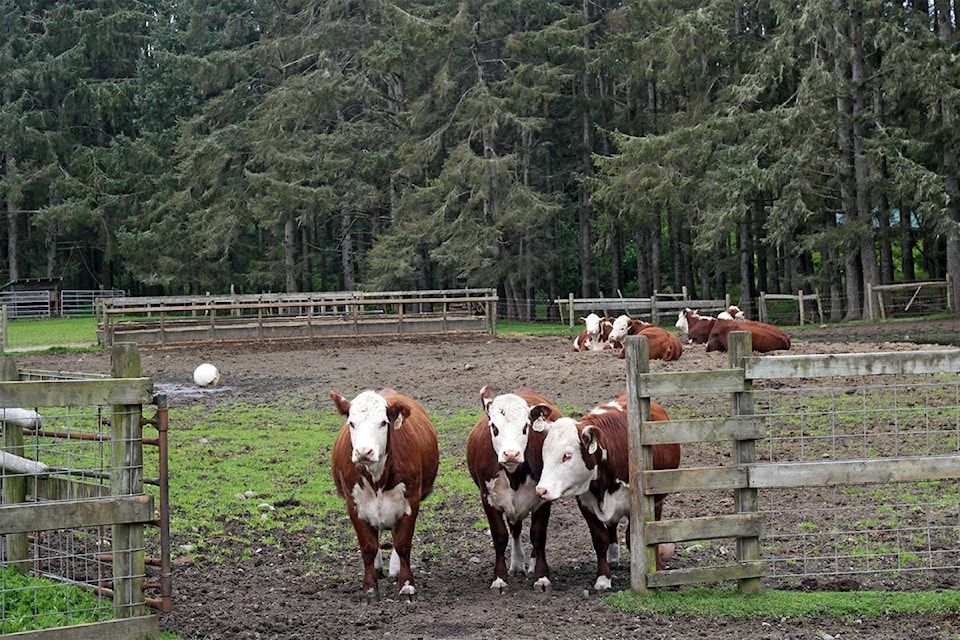David Zirnhelt
Special to the Tribune/Advisor
I didn’t file a column last week as we were travelling in the state of Oaxaca, Mexico.
This state is one of the safest in Mexico. It happens to be 60 per cent Aboriginal people. The rest mostly people of Spanish descent.
My reflections today are based on a fairly long view of the state of agriculture as I was able to observe by going to museums which backcast to a time before contact with the Spanish Conquerers.
The small part of the state in and around the capital city of Oaxaca, because it is inland, meat — beef and pork — are features almost more than seafood which is so prevalent and fresh on the coast.
This inland area is upland about 5,000-6,000 feet above sea level. There are grasslands and the forest a little higher is Pine, while the lower levels grow palms and nut and fruit trees.
Earlier populations of farmers pushed back the edges of the forest as they moved their cultivation up out of the valley bottoms.
READ MORE: Ranching as life long learning and making a difference
The reason I am writing is not so much a travelogue as a bit of insight that I garnered about what original people and settlers from Europe have done to the fertile soils of their places.
My observations were enhanced by the travelling companions we had: home and local food devotees, an anthropologist, world travelers and fellow ranchers.
Much of the steeper, up to 45 degrees slopes, were terraced in the early days probably thousand of years ago.
In neighbouring Michoachan, a similar environment exists near Lake Patzcuaro ( another area dominated by original cultures, and never defeated by the Aztecs in their heyday.
It is currently the avocado capital of the world. David Montgomery in Dirt: The Erosion of Civilizations cites three periods of soil erosion.
This is probably much how it happened where we visited in Oaxaca. Sediment coring in the lake provides evidence. I am not an expert on this subject just an interested student.
First around 3,500 years ago there was extensive land clearing shortly after maize (corn) cultivation began. The second erosion period was the late pre-classic period 2,500-1,200 years ago. The third period of peak erosion was immediately before the Spanish conquest when some 100,000 people lived around the lake.
The evidence is that fields were abandoned after erosion but were recultivated many years later as populations increased again. This is much the same as in Greece.
Now as we observed, agave plants which produce Mescal liquor, are being planted in old pastures and fields, since the market demand for this unique drink seems to be expanding worldwide.
We saw hundreds of renovated traditional mescal factories — with horses pulling the crushing stones to extract the fermented juice (honey they call it) from the agave roots.
So economic revival in this area of Oaxaca is fueled by the market and based on an original product.
The land is essentially planted to a cactus like plant-agave. Wild agave abounds in the upper elevation of the valley slopes.
Eroded soils can support some form of cultivation. It takes up to 25 years for an agave to mature and be harvestable.
The other product which seems to be thriving in the region is weaving, some of the best in Mexico, based on the Zapotec (native culture). One valley and community, Teotitlan, just outside Oaxaco city has many weaving centres in the homes of the people.
These homes show sign of some wealth compared to surrounding areas.
The Zapotec weavers can use the fibre from sheep and goats to make their rugs and garments. They are in control of their traditional lands.
Even though the lands appear denuded of rich soil, they still produce.
Soils in hot places are vulnerable especially if there is a rainy season where torrents can tumble the soil down the hills and away to the low places.
Much of this phenomenon has happened in Central and Northern North America.
However, the advancement of cultivation to support growing populations has played out again in America after European settlement.
David Zirnhelt is a rancher and member of the Cariboo Cattlemen’s Association. He is also chair of the Advisory Committee for the Applied Sustainable Ranching Program at TRU.
Do you have a comment about this story? email:
editor@wltribune.com
Like us on Facebook and follow us on Twitter.
